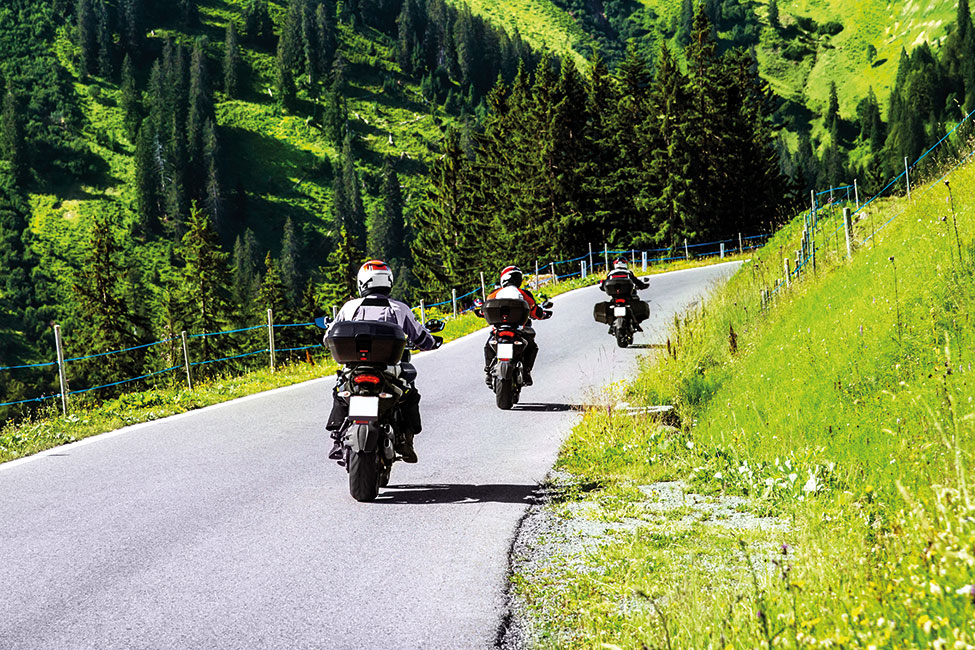Clearly inform other road users of your intentions, particularly if you change position or direction. Don’t hesitate to use your direction indicator lights, look around you, check blind spots and use hand signals… In general, do all you can to make sure you have been seen and that your intentions are clear to other road users. Don’t do anything suddenly.
Riding in a pack doesn’t mean that you can be less careful than when you’re riding alone, in fact, it’s quite the opposite. Just because the rider in front of you has just changed lane doesn’t mean that you should blindly copy them. Make sure you analyse the situation yourself and consider your own biking skills.
Remember that not everyone in the pack will ride at exactly the same speed. Safe following distances and reaction times mean that a pack of riders has to account for the emergent property of vehicle flow: when the first rider accelerates, the last one will accelerate later. The larger the pack, the more substantial this differential becomes. As a result, it’s preferable to place the least powerful, the most heavily loaded bikes and the least-experienced riders at the front of the pack. The flow will be more linear than if they are at the rear, whereas those with the most experience can keep up whatever the situation.
In a pack of bikers, the road captain or leader must drive smoothly and anticipate the effects of this emergent property on the pack. On entering towns, for example, the captain should slow down as soon as they see the city boundary sign so that the pack enters in a compact group at the correct speed limit. On leaving, the leader should accelerate gently once everyone is past the city boundaries.
Whatever the size of your pack, you should check your rear-view mirrors regularly to make sure that the bike behind you is still there. Slow down if you lose sight of the bike following you. If the whole pack applies this rule, then the bike ahead of you will also slow down, etc, up until the lead bike. We recommend checking your rear-view mirror at every intersection or route change at the least. That way you shouldn’t lose anyone during the trip.
Another common rule is that no one should change place and that everyone should return to their assigned position in the pack after each halt.
More importantly, the entire pack should agree on the rules before setting off, regardless of everyone’s respective experience or skills, to ensure the maximum pleasure and safety of all. In case of disagreement, break up into smaller packs rather than risk losing or forcing someone to ride beyond their means.
